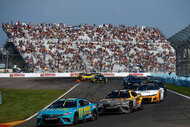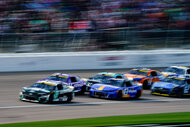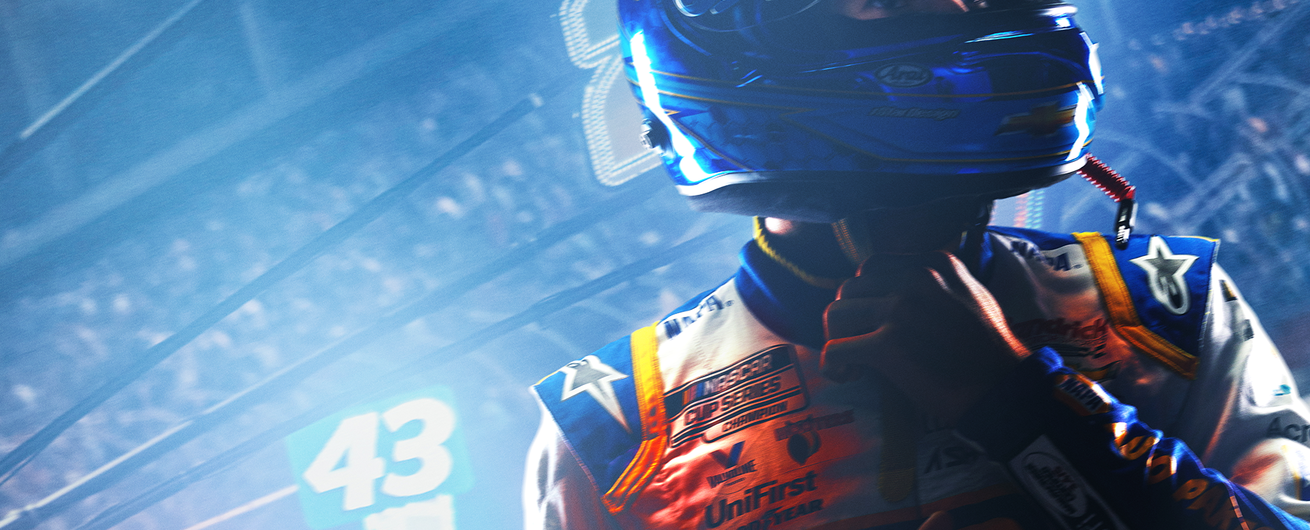What Is ‘Drafting’ In NASCAR?
The racing strategy has been a favorite among drivers ever since its discovery at the 1960 Daytona 500.

As we get ready for another NASCAR Cup Series season, let's head into the lab to talk about one of the fundamental principles of racing: drafting.
But since we’re not all a bunch of Einsteins, before we get into drafting, it’s important to first understand the concept of drag. Drag refers to the force acting in opposition to an object in motion. Think of tossing a ball through the air. It's running into countless air particles in its path, which serve to slow it down. That drag force, and gravity, determine where the ball's journey will end. In racing, the object in motion is obviously the car, and it will encounter drag all through its path around the track. For that reason, stock car builders have evolved their designs to integrate enhanced aerodynamics in an effort to reduce drag and ultimately make cars go faster.
Though technological engineering feats like NASCAR’s Next Gen car continue to develop, drag will never be completely eliminated – it’s science – because an object in motion, no matter the size, has mass, and, because of its mass, it will always redirect air as it moves through it. In stock car racing, this produces what’s known as the slipstream effect because as a car zooms around a track, it punctures the air, redirecting it out and around the car’s sides. The resulting low-pressure air directly behind the car creates a vacuum that pulls the trailing car forward.
How does drafting work?
Having laid the foundation for our new knowledge-engorged racing brains, drafting can thus be understood as the aerodynamic technique where one car closely aligns its nose inches away from the lead car’s bumper. This utilizes the lead car’s slipstream to effectively mitigate drag because the air directly behind the lead car’s bumper is subsequently going to have less resistance. By riding in this vacuum pocket, a racer can conserve fuel, reduce stress on the car, make fewer pit stops and hopefully elevate his chance at a successful finish. Furthermore, drafting allows the two cars to travel faster together than they normally would independent of one another.
While goofy and over-the-top like only a Will Ferrell movie can be, "Talladega Nights: The Ballad of Ricky Bobby" conveyed just how crucial driver teamwork is when attempting to draft. For starters, the front car will always bear the brunt of the resistance force, increasing the likelihood of greater engine fatigue. However, the tailing car can use its momentum to strategically push the lead car forward, but this requires direct, clear communication between drivers and some deftly applied finesse behind the wheel. Otherwise, a forceful tap can cause the lead car’s tires to momentarily lose traction, making a driver vulnerable to losing control and spinning out. If a driver intentionally uses that tactic to pass another driver, it’s referred to as a bump-and-run. Even when properly executed, it’s a risky maneuver that can be dangerous for all parties involved and often ignites simmering tension into full-on slugfests.
Is it legal in NASCAR?
Normal drafting with two cars stacked very closely together is permitted throughout the various NASCAR tiers, but tandem drafting is not allowed. The crucial difference is that in tandem drafting, the two cars are actually making contact with each other: the nose of the second car touching the bumper of the first car. When the controversial tactic was deployed in 2013 at Daytona, Kyle Larson’s car jettisoned through the air, and its far-flung debris injured dozens of event attendees. As a result, NASCAR decided to ban tandem drafting in 2014.
When was drafting first used?
As with most things he did, NASCAR legend Junior Johnson was well ahead of the curve. As the story goes, the hero bootlegger-turned-Cup Series driver had no idea why his 1959 Chevrolet was going considerably slower than the rival Pontiacs were in a Daytona practice. During the actual race, he got the idea to settle in behind them, and that’s when he noticed his car’s RPMs weren’t running at such a high clip as they had been. He stayed in behind the Pontiacs through the duration of race, and by the end of the event, when the other cars were failing, there Johnson was to take home the checkered flag.
In his later years of life, Johnson, who not only invented the tactic but also became the first to win with it in the second-ever Dayton 500 in 1960, called drafting a dying art.
"I don't think a lot of these guys are really good in the draft," Johnson said while watching a NASCAR race in Indianapolis in 2008, according to ESPN. "There's a lot of skill to it."
Can't get enough NASCAR action? Catch up on “Race For The Championship,” on Peacock.















